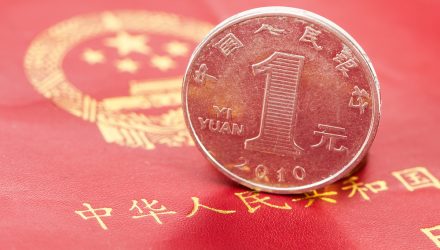Emerging markets equities are performing well to start 2023 with China, not surprisingly, playing a major role in that bullishness.
The resurgence of Chinese equities — one largely born out of that country shedding long-standing COVID-19 restrictions — is a reminder to investors that while hundreds of exchange traded funds provide access to this marquee emerging market, some due diligence is required.
For example, due to slowing revenue growth, state-owned companies in China may not be the preferred avenue for investors looking to tap that country’s equity market rebound. With that in mind, the Invesco Golden Dragon China ETF (PGJ) is an ETF to consider.
PGJ, which turned 18 years old last December, is an example of a China ETF that could be ideal for investors looking to access what could be a redemption for leadership from consumer spending and growth stocks. On that note, the $255.5 million ETF allocates nearly 79% of its weight to the consumer discretionary and communication services sectors.
“We’d like to emphasize that China reopening is probably going to be more V-shaped than the consensus expects, with substantial excess savings in consumer pockets likely to support consumption through this year,” noted Jonathan Garner, chief Asia and emerging market equity strategist at Morgan Stanley.
Home to familiar Chinese growth stocks, including Baidu (NASDAQ:BIDU), Alibaba (NYSE:BABA), and electric vehicle maker Nio (NYSE:NIO), PGJ has a history of being viewed as an ETF that’s home to Chinese companies that are that country’s answers to an array of vaunted, high-growth American firms. That’s a status that could serve investors well if growth equities exhibit leadership traits in an ongoing Chinese equity rebound.
On a related note, PGJ’s exposure to growth stocks may make it more richly valued than ETFs that are heavy on Chinese SOEs. However, many of the ETF’s member firms trade at notable discounts compared to equivalent American companies.
Broadly speaking, emerging markets stocks are less expensive than U.S. counterparts. Plus, the former is experiencing more bullish earnings revisions than the latter, which could be a boon for PGJ.
“Unlike the U.S. market, earnings estimates revisions in Asia and emerging markets are now inflecting upwards, and that’s why emerging equities are performing U.S. equities more rapidly even than in early 2009. And we think this outperformance is likely to continue a while longer. As we’ve entered a bull market the 52 week rolling beta, or measure of correlation of emerging markets versus U.S. equities, has undergone a regime shift falling from around 0.8 times in the third quarter last year to just 0.4 times currently,” concluded Garner.
For more news, information, and analysis, visit the Innovative ETFs Channel.
The opinions and forecasts expressed herein are solely those of Tom Lydon, and may not actually come to pass. Information on this site should not be used or construed as an offer to sell, a solicitation of an offer to buy, or a recommendation for any product.








